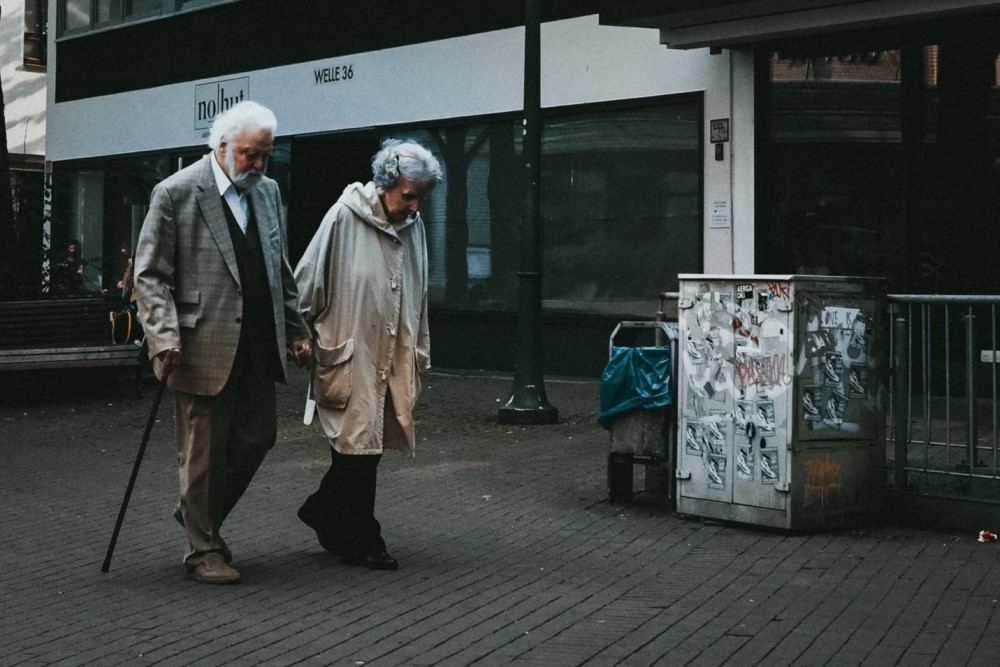
“At 80, one can take a long view and have a vivid, lived sense of history not possible at an earlier age. I can imagine, feel in my bones, what a century is like, which I could not do when I was 40 or 60.”
“I do not think of old age as an ever-grimmer time that one must somehow endure and make the best of, but as a time of leisure and freedom, freed from the factitious urgencies of earlier days, free to explore whatever I wish, and to bind the thoughts and feelings of a lifetime together.”
Dr. Oliver Sachs
There will be a shift in the global aging population from 7% today to 20% in the next few decades. This growth will be one of the most significant social, economic, and political transformations of our time. It will force changes in systems, have an impact on families, and will require new solutions.
Though older adults are a reigning economic segment, the attitudes and stereotypes about aging persist, and market innovation to meet their needs is lagging.
Collaboration among policymakers, civil society, academia, and the private sector is crucial to creating holistic solutions that promote older adults’ safety, autonomy, well-being, and dignity.
Many societies have outdated beliefs about aging. For example, older adults are often described as frail, as “challenges” to be addressed, and they are discriminated against, particularly in the workplace, where their experience and knowledge should count.
While we celebrate the birth and growth of children and their early adulthood, we fail to respect those with wisdom and important stories to pass down to younger generations. Marketing companies tend to focus on millennials and Gen Z, but the baby boomers are largely forgotten as one of the most significant economic segments.
In the early days of the Covid-19 pandemic, one of the most pressing concerns was best communicating information to those at greatest risk — particularly the elderly. Unfortunately, many attempts were riddled with stereotyped depictions of frail, lonely, and incompetent older people. In doing so, messages from advertisers, public health officials, and policymakers may have failed to resonate with large swaths of their targeted audience. Yet, given a rapidly aging population, effective messaging to older people holds national importance for public health and the marketing of goods and services.
Getting old isn’t nearly as bad as people think it will be. Nor is it quite as good.
On aspects of everyday life ranging from mental acuity to physical dexterity to sexual activity to financial security, a new Pew Research Center Social & Demographic Trends survey on aging among a nationally representative sample of 2,969 adults finds a sizable gap between the expectations that young and middle-aged adults have about old age and the actual experiences reported by older Americans themselves.
These disparities come into sharpest focus when survey respondents are asked about a series of negative benchmarks often associated with aging, such as illness, memory loss, an inability to drive, an end to sexual activity, a struggle with loneliness and depression, and difficulty paying bills. In every instance, older adults report experiencing them at lower levels (often far lower) than younger adults report expecting to encounter them when they grow old.
“It’s not how old you are. It’s how you are old.” – Jules Renard
As the aging population expands, it will become increasingly important for health care providers to become aware of and sensitive to the needs and concerns of older adults. Ageism is a term that describes negative stereotyping of older adults and discrimination because of older age. Health concerns and symptoms in the elderly may be overlooked or dismissed as part of the normal aging process. Consequently, several conditions in older adults are significantly underdiagnosed and undertreated. Misconceptions about aging encountered in medicine and society include sexuality, sleep disturbance, depression, cognitive impairment, and substance abuse. We can learn to recognize ageist notions that influence medical practice. Perhaps by becoming more aware of the myths and realities of aging, we can improve the health and quality of life of our elders.
For every action there’s an opposite and equal reaction. As the new telehealth and aging in place dynamics take hold, individuals’ increased emphasis on privacy and avoidance runs the risk of inviting feelings of isolation. Since it’s well-established that isolation is detrimental to emotional well-being, the new caregiving models will need to find ways to compensate. Despite all of the technological improvements in helping people to stay connected virtually, there is no substitute for the in-person contact and interaction that people of age crave. While the nursing home model is being scrutinized for safety, it needs to be recognized for the communal benefits that it provides, and that type of emotional caregiving needs to find its way to the home. High technology will not thrive unless it’s accompanied by high touch.
In all of this, the good news is that people of age will be able to experience living choices that were once inconceivable. Improvements in longevity mean that people are living longer, and with a new wave of improvements in caregiving they can also enjoy a better quality of life longer too. If we’re getting better at the way, we manage aging, then people truly can get better with age. How wonderful is that?


